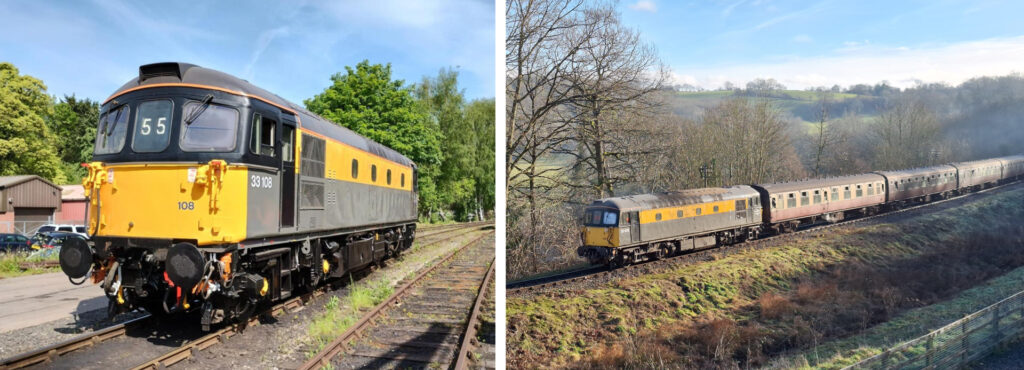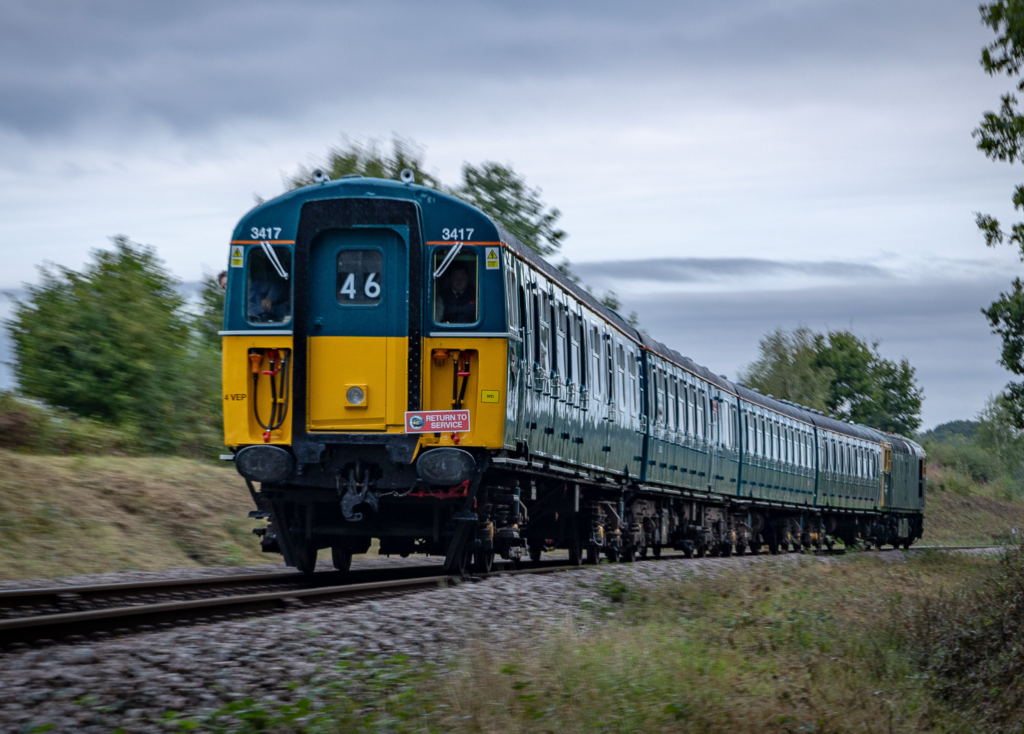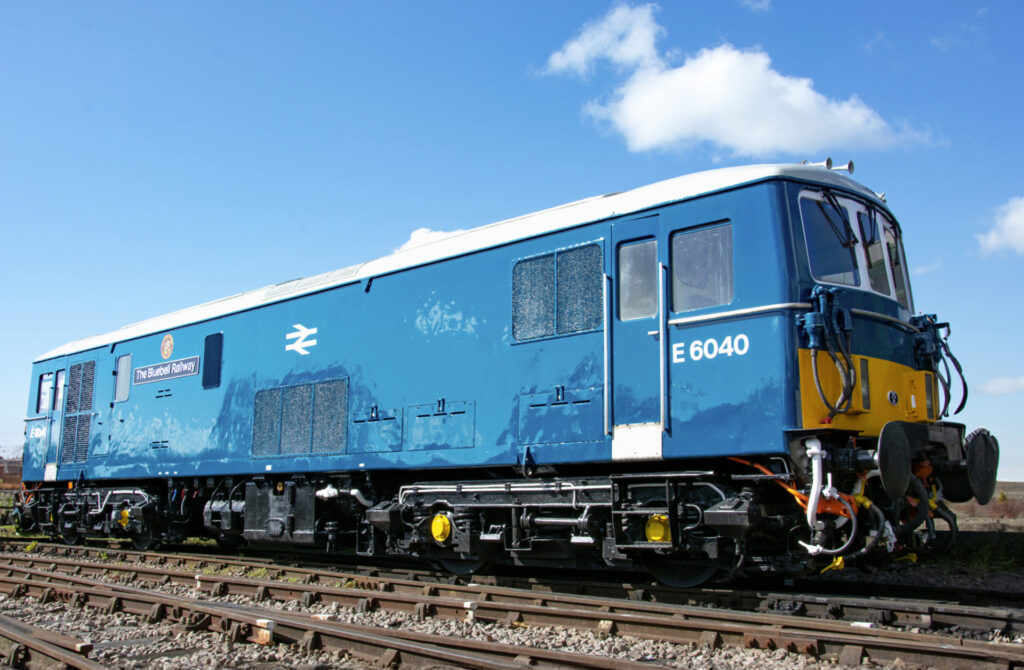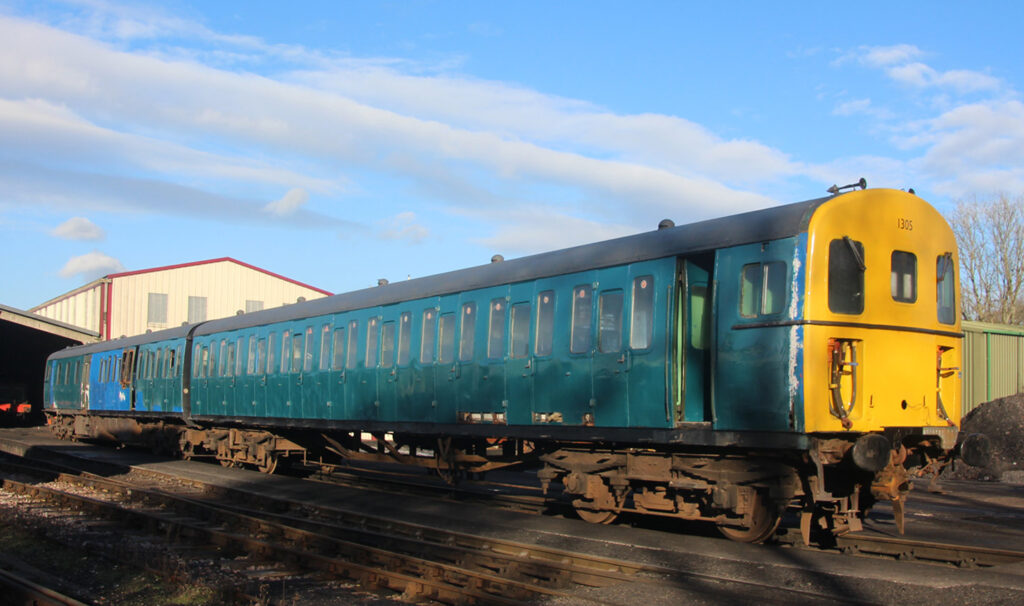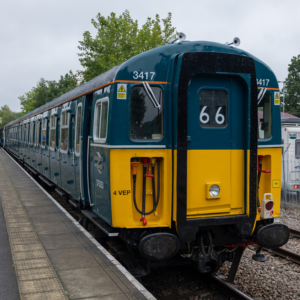Get ready for an action-packed weekend as the Bluebell Railway Diesel Gala returns this September!
This year’s event promises to be bigger and better than ever, with a fantastic selection of heritage diesel locomotives running an intensive timetable across our picturesque railway.
Expect a variety of home fleet and visiting locomotives, hauling a mix of passenger and demonstration freight services. Enjoy the rare chance to see diesels operating across the full length of the Bluebell Railway, with plenty of opportunities for enthusiasts and photographers alike.
Building on the success of previous years, the 2025 Diesel Gala will also feature late-evening trains, live music at Horsted Keynes Station, and a range of food and drink options to create an unforgettable atmosphere. Whether you’re a lifelong diesel fan or simply looking for a great day out, this event has something for everyone.
Confirmed guest locos
Class 33/1 No.33108
With thanks to the 33/1 Preservation Company Ltd and the Severn Valley Railway Ltd
British Rail Class 33 locomotive 33108, originally numbered D6521, was built by the Birmingham Railway Carriage and Wagon Company and entered service on 10 September 1960. Initially allocated to Hither Green, it was reallocated to Eastleigh in 1963, where it remained for the rest of its working life.
In 1967, D6521 was fitted with push-pull equipment, allowing it to operate with unpowered coaching stock in a push-pull configuration. This enabled diesels like 33108 to work with multiple units like 3417 ‘Gordon Pettitt’ on non-electrified lines As a result, it was renumbered 33108 on 1 January 1974. The locomotive continued in service until its withdrawal on 24 May 1993, after which it was sold to the Class 33/1 Preservation Company in January 1997.
In preservation, 33108 has been based at various heritage railways, including the Swanage Railway and the Severn Valley Railway (SVR). It first visited the SVR for the 2012 Diesel Gala and returned for the Spring Diesel Festival in 2017. Following this, it remained on loan to the SVR and is listed as part of their home fleet.
Notably, during its time with Fragonset Railways, 33108 was named “VAMPIRE” from 17 May 2002 to 25 April 2005. The livery that we see 33108 in today is a BR infrastructure livery known as ‘Dutch’, which was similar to the corporate colour scheme used by the Dutch National Railway system at the time.
Today, 33108 continues to operate on heritage railways, serving as a testament to the enduring legacy of the Class 33 locomotives. We are very grateful to the 33/1 Preservation Company for allowing 33108 to take part in the 2025 Diesel Gala.
4-VEP 3417 ‘Gordon Pettitt’
With thanks to the Southern Electric Traction Group
We are extremely grateful to welcome back Class 423 VEP No. 3417 ‘Gordon Pettitt’ to the Bluebell Railway for our 2025 gala. This special piece of Southern Region traction, owned and lovingly restored by the Southern Electric Traction Group (SETG), will be making a much-welcomed return to our line again, thanks to the dedicated efforts of Chief Engineer Chris Buckland, Steve Upton and their team at Strawberry Hill depot.
The Class 423 VEP (or “4-VEP”) is an electric multiple unit (EMU) that operated on the British railway network. The “4” in its designation represents the number of coaches and “VEP” stands for “Vestibule Electric Pneumatic” due to its pneumatic brakes. These trains were primarily used in the Southern Region of British Railways and were a part of the Mark 1 family of EMUs. 4 VEP No. 3417 (originally numbered 7717) was ordered by British Rail in 1965, as part of an initial order of 20 units to replace steam traction on the Southern Region. In total, 194 units were built between 1967 to 1975.
The units operated extensively until their withdrawal from mainline services in 2005. No. 3417 was named ‘Gordon Pettitt’ in honour of the former General Manager of the Southern Region of British Rail, and its visit to the Bluebell Railway this year is a fitting accolade to his remarkable railway career, especially following his passing in March of this year.
Under the stewardship of SETG, the unit is now stabled at Strawberry Hill Depot in South West London and continues to be carefully maintained and restored, with the aim of returning 3417 to the mainline. We sincerely thank the Southern Electric Traction Group for allowing this iconic unit to travel to the Bluebell Railway for this year’s gala—a true celebration of Southern Region heritage and a tribute to Gordon Pettitt’s legacy.
Home fleet diesels that will be involved
E6040 ‘The Bluebell Railway’
Known latterly as Class 73s, these were electric locomotives for the Southern Region’s third-rail system, but incorporating a 600 hp diesel engine, similar to those used in the Southern Region’s DEMUs, intended for use in sidings and other non-electrified areas. Six prototypes, the ‘JA’s, were designed and built at Eastleigh in 1962 using English Electric equipment. They were built to the narrow ‘Hastings Gauge’, giving universal track access across the region.
43 more Electro-diesel Locomotives, ‘JB’s in Southern Region classification, were ordered from English Electric, built between 1965 and 1967, as part of the fleet to operate the newly electrified Waterloo-Southampton/Bournemouth line. Initially numbered E6007-E6049, they differed slightly from the ‘JA’s, most notably having higher tractive effort and a 90mph maximum speed.
73133 (as E6040 had become in 1973 with the TOPS renumbering programme) was named ‘The Bluebell Railway’ in September 1990, and ran onto what is now Bluebell property two years later at the ceremony passing ownership of the viaduct at East Grinstead. The loco was used in a variety of different roles, including being used for crew training for the introduction of ‘Gatwick Express’ services in 1984.
The locomotive just escaped being scrapped in 2004, entered preservation at the Barry Island Railway, but returned to main-line use in 2013 and having been used as a shunter at Bournemouth Depot with South West Trains and more recently at Eastleigh Works in 2017, was privately purchased from there in December 2022 by a member of the Bluebell Railway’s locomotive department. It was refurbished at his expense at Eastleigh Works in early 2023, prior to moving to the Bluebell Railway. The locomotive is now part of the home fleet and also visited the Epping & Ongar Railway before taking part in the 2025 Diesel Gala weekend.
DEMU 1305
DEMU 1305, affectionately known as the “Brighton Royal Pavilion”, is a historically significant Class 207 Diesel Electric Multiple Unit (DEMU), originally constructed in 1962 at Eastleigh Works for the Southern Region’s Oxted Line services. These units earned the nickname “Thumpers” due to the distinctive sound produced by their diesel engines.
Built as No. 1305, its allocation in BR days was at St Leonards and Eastleigh, ending its days at Selhurst, before being passed into preservation. Amongst its many passenger duties, this class of DEMU used to regularly work out of London Bridge or London Victoria to East Grinstead passenger services and may well have ventured onto Imberhorne Viaduct before Bluebell ownership.
In 1991, the unit underwent a conversion to a two-car configuration, designated as 207102, which involved removing the centre coach, installing fluorescent lighting, and adding corridor connections between the remaining coaches. Subsequently, in 1995, an ex-4cep EMU trailer coach was incorporated as a centre carriage, and the unit was renumbered to 207202. On 3 June 1995, at Brighton Station, it was ceremoniously named “Brighton Royal Pavilion”, drawing inspiration from the nearby historic Royal Pavilion.
After withdrawal and a spell operating at the East Lancs Railway, 1305 was moved to MOD Bicester, where the unit was later acquired by the Bluebell Railway, marking it as their first and only passenger-hauling diesel multiple unit. Restoration efforts are currently underway by the dedicated volunteer group known as the 1305 Oxted Thumper Gang. Once restored, 1305 is expected to serve on early morning and late evening services, providing flexibility during high fire risk periods and acting as a backup when steam locomotives are unavailable.
Diesel Shunter D4106
The 350 hp diesel-electric shunter had been in development before WW2. The English Electric Co. had been working in cooperation with the pre-nationalisation railway companies and had built prototypes with all four of them. The LMSR was most interested in the diesel shunter and had a strong interest in diesel traction overall. The great advantage of the diesel shunter was that it could work constantly between refuelling and maintenance and thus could replace up to three steam shunting locomotives in a marshalling yard. When fitted with a “deadman’s treadle”, which applied the brakes in the event of a driver being disabled, it could be operated by a driver alone, without the need for a fireman/secondman.
The BR 350 hp shunter was developed from a similar LMS machine, the first example appearing in 1952. Subsequent builds included locos with different engines and some with a higher maximum speed, like D4106. Built at BR’s Horwich Works and released to traffic on 13 November 1961, D4106 was first allocated to Carlisle Kingmoor (BR/LMS shed code 12A). Its higher speed of 27.5 mph (over the standard 15 mph) gave it an improved performance when undertaking trip working, while not detracting from its ability to undertake general shunting duties, including pushing rafts of wagons over the hump in modern marshalling yards like Kingmoor.
The shunter would then be allocated to several locations: Rugby, Crewe, & Toton before its transfer onto the Southern Region to Selhurst in 1968. As well as being renumbered as D9018 in 1973, it would serve across the Southeastern division for nearly 40 years until being stored by EWS at Hither Green in 2004. D9018 was sold to HNRC in 2010 and was then acquired by the D4106 Preservation Group at The Bluebell Railway in 2013. In 2017, the group reverted the loco to BR Brunswick Green and reverted its pre-TOPS number of D4106. Since then, this loco has provided sterling service to the railway across many different requirements
Make sure you sign up for our weekly newsletter and keep an eye on our social media for further updates on this exciting gala.



